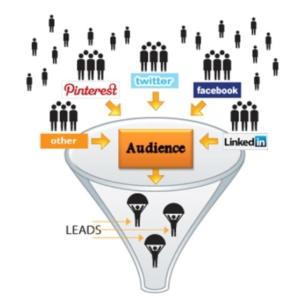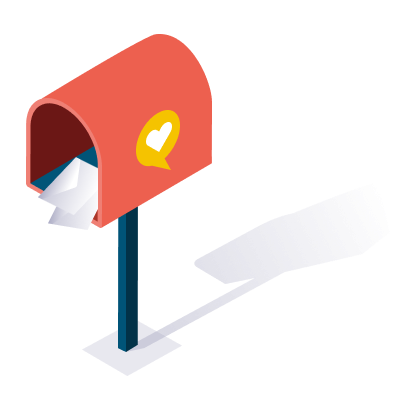Avery Phillips
Avery T. Phillips is a freelance human being with too much to say. She loves nature and examining human interactions with the world. Comment or tweet her with any questions or suggestions.
"The best way to predict your future is to create it”. Let's Disrupt the market Competition by implementing these marketing strategies for brand success.
Businesses, large and small alike, have to find ways to differentiate themselves from their competition. In a world where every product and service has competitors, marketers must think and act innovatively. Customers are looking for things that set companies apart and distinguish them, and an organization’s ability to make those things clear is what will disrupt the competition and drive conversions.
In many ways disrupting the competition is as much about bolstering one’s own relationship with the people making up the customer base as it is about responding specifically to other companies’ efforts. Historically, the companies that have ultimately come out ahead of their competitors are those who were working for the customer’s attention above all else.
The challenge for marketers is convincing consumers they should pay attention when there are so many others vying for the same thing. According to CBS News, we are exposed to approximately 5,000 ads a day.
That kind of volume means cutting through the noise and making a lasting impression on a consumer is not just going to happen by chance. Unlike the past, when marketers could essentially buy their target audience’s attention, now that attention has to be earned. Consumers want to buy from brands that they feel embody the ideals that they care about.
As Ross Cooks writes for Forbes, “The same things that attract you to a person draw you to support (or work for) a brand: shared values, purpose, ideas, taste, humor. When brands don’t embrace their humanity and shared purpose for working together, they can’t communicate effectively to cultivate real human connections. They can’t be our friends.”
For example, the energy drink maker Red Bull does not focus its energy on highlighting the beverages themselves, instead, they focus in on what interests their target audience, namely extreme sports.
Thus, if you visit their website, there’s not a single image of their product on the home page. If you scroll through their Twitter feed, what you find is not an overt call to drink Red Bull, but rather a curated feed that showcases the athletes (sometimes with Red Bulls in hand) that the average Red Bull user respects and admires.
Getting a customer to give your brand more than a passing glance happens when they believe that they have something in common with your organization’s core beliefs. This is communicated with everything that they see, from the posts on social media to the packaging the product arrives in.
When you have a customer’s attention, the next step is to ensure that attention becomes a conversion. This is where true disruption of competitor efforts happen. Creating meaningful, long-lasting relationships is largely about joining the story-telling component with the practicality component.
Even if they connect on an emotional level, a customer is not going to stick around if their experience with your brand is not intuitive and cutting edge. To transform attention to conversion, stay on top of the current marketing trends, because if you fail to do so, the customer will notice. Rutgers University notes these important tenets of marketing today:
Mobile searches have surpassed those of desktop. Mobile optimization ensures the bulk of your traffic is not going to be put off by a failure to evolve on mobile platforms.

According to Ian Mills for the Huffington Post 90 percent of consumers move back and forth between devices, mobile users spend more money, but 30 percent will not follow through with a purchase if the shopping cart isn’t optimized for mobile platforms.
Consumers utilize social media to read reviews, ask for recommendations, and compare products. Additionally, social media provides massive amounts of free data.

As we’ve noted before, “Activity on social media defines and determines the credibility and desirability quotient of a brand.”
Not taking advantage of social media means that a company will not only miss an endless amount of chances to connect with customers and to represent one’s brand, but they’ll miss the opportunity to collect a lot of important information about the behavior of their target audience.
Marketing automation refers to software that automates much of a marketer’s job. So, emails, social media posts, etc., are consistently utilized to generate conversions without manual effort. Seventy eight percent of marketers say that automation boosts their revenue.
Customers are always intrigued by new, innovative methods of payment. So much so that requiring antiquated methods of payment — like checks — can stop a sale in its tracks. Disrupting competition can happen just by ensuring that you’re providing the easiest method of payment.
It is nearly impossible for a brand to connect with people without content marketing. Content is what strikes a chord in the modern world this largely manifests itself in shares, and good content is what gets shared, read, and remembered by future customers. Content has often been hailed as king, and that’s not going to change anytime soon, regardless of the tech advances that change how that content is delivered.
Successful marketing strategies are those that merge the creative with the scientific and the emotional with the strategic.
In the words of the marketing experts at Arizona State University, “Ultimately, the marketing team is responsible for developing the message an organization wants to share to help build brand identity and interest in its products or services.”
To disrupt competition, a company’s marketing strategies must first zero in on the values held by their core target audience, and once those values are used to draw customers in, the company must utilize the tools available to demonstrate, on a practical level, why a consumer’s money is better spent there than elsewhere.
You show them why what matters to them matters to your brand, and then you make it easy, enjoyable, and intuitive to support your brand across all channels.
You’ll also receive some of our best posts today

Avery T. Phillips is a freelance human being with too much to say. She loves nature and examining human interactions with the world. Comment or tweet her with any questions or suggestions.